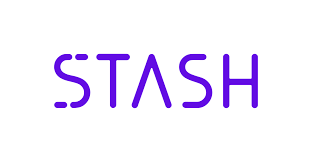Our Review of Stash Investments: Is Stash Investments a good Investment Account and How Does It Work?
Our Review of Stash Investments. As some may have seen over the past year, a new app has hit that market that is starting to dominate the investment world: Stash. While Stash has been available since 2015, they are now offering plans and processes that others are not. There are more choices for investment accounts than ever such as M1 Financial, Robinhood and WeBull. Which is right for you? Let’s dive into Stash a little deeper.
A Review of Stash Investments and what they are good at:
- Investments with fractional share ownership.
- Free Trades – Low Cost – $1.00, 3.00 and 9.00 per month account fee.
- Banking services tied right to your investment account(s).
- Stock back – on debit card purchases.
- Good Investment research tools with personalized guidance.
- Savings tools.
- Some life insurance included in each plan $1,000 to $10,000.
- Two plans allow Roth and Traditional IRA Accounts.
Who is Stash Investments good for?
- A beginning investor who needs some help getting started with savings and investing.
- Can build some savings with stock back rewards.
- Someone who wants to automate their monthly savings.
- Likes working with a phone app.
Stock/ETF and Automatic Trading:
Just like many other investment accounts, the Stash app also lets you do any most types of traditional stock and ETF trades. During my time using the app, I was able to make typical trades easily and quickly. Note trading is not done in real-time but during 4 daily trade “windows” each trading the day. To keep your trading fees low Stash like many other aggregates orders and then executes them through a broker-partner. This isn’t great if you are trying to day-trade but it is far better than paying $3-5.00 per trade on small orders. This is in fact perfect if you are adding smaller amounts of savings to your portfolio every week or month. You early savings will grow best with no-cost trading than trying to time small stock/fund purchase during a trading day.
You can of course set up automatic monthly investments that drop into any number of Exchange Traded Funds or Stocks in your account.
Purchase of Fractional Shares:
One of the things that Stash offers unlike many others is the ability to purchase fractional shares of stock. While this ability has become more common with many of the newer investment apps, the process to purchase fractional shares with the app is very simple and easy. It has the same user experience and eases as Robinhood, M1 investments and others. Instead of buying a number of share you buy in dollar amounts.
Having the ability to purchase smaller amounts of a stock has some significant advantages. It helps you participate in high share price stocks like Amazon and lets you spread your money out into more company’s stocks. You can thus take a $100 investment and buy 10 – $10.00 slices of 10 companies. This is an excellent way to maintain diversification.
While you should achieve proper diversification by buying ETF’s until you build your overall account value. You may wish to buy some fractional shares of some or even many companies. One warning, moving fractional shares to another brokerage is nearly impossible. Most brokerages, even those who let you buy fractional shares will only accept full shares coming into a new account. If you think you are going to move around from among different investment brokerages fractional share ownership becomes an issue. So, stay put and use the ability to buy small slices of stocks.
Review of Stash Investment – Special Feature Stock Back with Purchases:
No review of Stash Investments would be complete without pointing out the great stock-back on debit card purchases feature. This is where Stash sets itself apart from all the competition out there. By using their banking debit card, when you make purchases you get money back in the form of shares of stock. This is a topline contender with my Capital One Venture Card. The value it offers is very comparable to Venture at the same approximate cost of $9 a month which we will explain below. This card offers more value than the average credit card which makes it a strong reason to use this app over others. Especially when you are new to investing and trying to build up some base investments..
Stash mimics a similar theory as Acorn, but you get stocks for the benefit of using the card instead of rounding up your purchases to the nearest dollar. Receiving stock is potentially a better reward. Getting stock back instead of cash gives you the potential of those shares later increasing in value. Cash back usually just gets spent.
Stock Investment Education:
Like other apps out there, Stash offers a lot of material for stock investing, education, and explanations on their platform. The one thing that I noticed was the ease of use when searching topics and their home page which recommends current news that was going on during the days I used the app. It was a live RSS feed but had the same feel as Yahoo or Apple news.
Cost to Play:
This is where the money meets the paper. There are three options with the pricing for Stash which are the Beginner, the Growth, and the Stash+. Below we will explain each one with the cost and features that they offer.
- Stash Beginner – $1/month – This package offers the ability to invest, the stock back card which allows you to get stocks based on purchases. In addition you also get the ability to bank with Stash, a savings tool that helps personal savings growth, personalized advice based on your spending habits and $1k in life insurance which is offered by Abvira.
- Growth Stash – $3/month – the Stash Growth choice offers everything mentioned in the Stash Beginner plus the ability to set up a Roth or a traditional IRA. You will wan to take advantage of the tax benefits that are part of retirement investing. Appropriately the is a personalized retirement advice section that works with you and where you want to be upon retirement.
- Stash+ – $9/month – this is the ultimate package offered by Stash. It is everything mentioned above and offers the ability for investing for your children, a 2x stock back bonus, and premium research advice. That is a lot packed right in your investment app plus $10k in life insurance. For many people the $10K in life insurance is nearly worth the $9.00 per month.
As I mentioned above, if you are already using a credit card that has a premium per year, at $9/month you are right in line with those premium cards but you get a lot more added benefits especially when you break up the cost of a stock over points offered per dollar spent.
In conclusion of our review of Stash
Overall, we were very pleased with the app as there were a lot of added benefits and features that we didn’t have in our other apps or trading platforms that didn’t require a 3-hour phone call with an agent. Before you go over to Stash you do need to make sure you do your own research as this is our personal review based on our use and while we loved the app, we want to make sure you do as well.
Opening an account at Stash is an important part of you financial future. See our related articles on Starting a Budget, Tracking Your Net Worth and where to go for investment advice Our Motley Fool Review.

